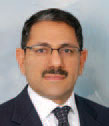Dear Reader,

Be more competitive: that is the message from the International Monetary Fund to the Middle East. To an extent, it’s a case of “please tell us something we don’t know”, but, in reinforcing MENA’s awareness of its own shortcoming, the IMF is also looking to the future.
Whilst acknowledging that recovery is under way, in the oil-rich Gulf states certainly, and, up to a point, across other parts of the Middle East and North Africa, the IMF says that the pace is still tentative. But, according to our article by Paul Melly in this issue, there is a risk that the benefits of new growth will be unevenly spread and will fail to translate into employment and public prosperity on the scale that might have been hoped for.
In short, the IMF believes that the challenge is to develop a wider range of products and services to complement the hydrocarbons sector on which many Middle Eastern states remain over-reliant. Drawing on the latest data from individual countries, it is projecting a 3.5 per cent rise in oil sector GDP in the region this year, with 4.3 per cent forecast for 2011.
However, by contrast, it believes that over the two years from 2009 to 2011, the GDP of the Middle East’s non-oil economy will have risen by just a single percentage point.
“Enhancing competitiveness will be key for the region’s ability to grow faster, create more jobs and fully reap the benefits of globalisation. This will imply improving the quality of education, developing a more favourable business environment, and deepening and diversifying trade flows,” says Masood Ahmed, director of the Middle East and Central Asia department at the IMF.
For some time, the global Islamic finance industry has complained about the lack of a truly international and well-structured liquidity management scheme. Mushtak Parker, our expert in the field, reports inside this issue that the matter has remained a major bottleneck.
Recently, though, several new initiatives have been announced. In October, in Kuala Lumpur, 11 central banks and two multilateral organisations signed the articles of memorandum for the launch of the International Islamic Liquidity Management Corporation (IILM), which has been facilitated by the Council of the Islamic Financial Services Board (IFSB), whose mandate is to set prudential and supervisory standards for the global Islamic finance industry.
In our latest Tajara report, CMM trade partner Caroline Maginn looks at the phenomenal success of the Riyad Bank, which continues as market leader in corporate banking and trade in Saudi Arabia. (Full details of the Riyad Bank and others in the KSA are available in the Tajara Monitor Q3 2010 report, which is available to subscribers).
This issue marks a milestone for Cash&Trade: it concludes our first year of publishing, and the warmth of reaction from our readers has delighted us.
As we hoped, and based on our mission to inform, educate, and engage the region’s finance community, we have aimed to deliver expert commentary and thought-provoking editorials over the past year.
In fact, many have commented on the aptness of our title: the feeling has been that by combining the two words “cash” and “trade” we have hit the nub of the sector. As the only publication in the MENA region dedicated to cash management and trade, we promise readers that 2010 is just the beginning. As our reputation grows, we will in 2011 be bringing even deeper insights into cash and trade business in the region.
Whilst we look forward to a promising 2011, we would like to thank all those advertisers and readers who have supported us over the past 12 months.
 Cash And Trade Magazine For Cash and Trade professionals in the Middle East
Cash And Trade Magazine For Cash and Trade professionals in the Middle East


